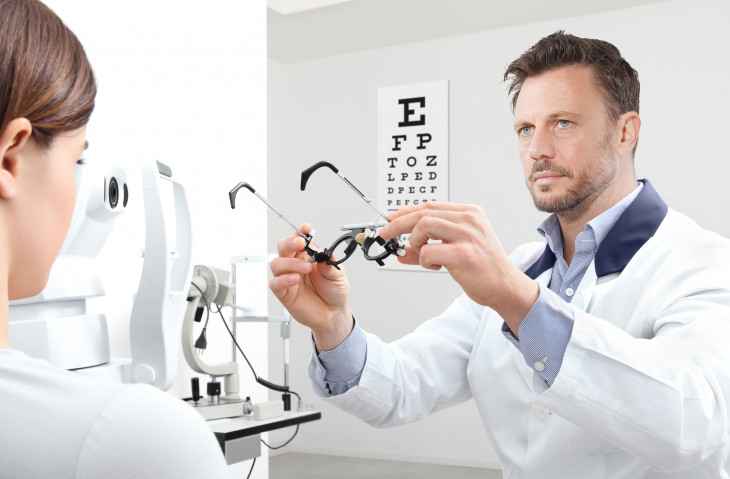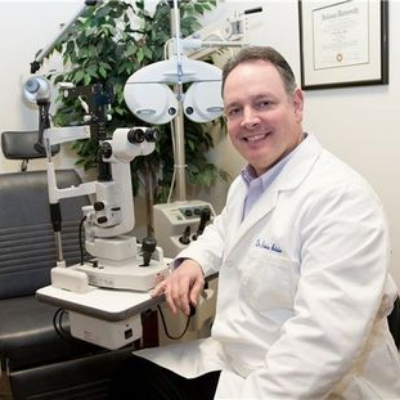Experience Personalized Treatment with Opticore Optometry in Chino
Wiki Article
Checking Out the most up to date Technical Advancements in Optometry and What They Mean for Optometrists
From the accuracy of Optical Coherence Tomography to the nuanced insights offered by AI-driven analysis devices, these innovations are setting new criteria in person analysis and therapy. As these advancements permeate the technique, optometrists are faced with the obstacle of accepting these devices to boost client results.Developments in Diagnostic Devices
Progressing the area of optometry, advancements in analysis tools have changed the means eye care professionals assess and detect aesthetic impairments and ocular conditions. The previous decade has actually seen substantial technological developments, enabling more detailed and exact examinations. Optical Comprehensibility Tomography (OCT), as an example, gives high-resolution cross-sectional photos of the retina, enabling the very early detection of conditions such as glaucoma and age-related macular deterioration. This non-invasive imaging method has actually become essential in contemporary optometric method.One more secret technology is the introduction of advanced corneal topography systems, which map the surface area curvature of the cornea with precision. These tools are especially useful for suitable contact lenses and diagnosing corneal disorders. Electronic retinal imaging has actually changed standard ophthalmoscopy, offering in-depth, scenic sights of the retina that facilitate thorough aesthetic examinations.
The development of wavefront aberrometry has likewise been critical, enabling the analysis of refractive mistakes with unmatched precision (Optometrist Chino). This modern technology assists in customizing restorative lenses and boosting surgical outcomes for refractive surgical treatments. Jointly, these analysis advancements empower optometrists to provide remarkable individual care, making certain early treatment and tailored treatment strategies, ultimately improving aesthetic health and wellness results
AI in Patient Monitoring
Structure on the structure of innovative analysis tools, the consolidation of artificial intelligence (AI) in patient monitoring stands for a transformative leap for optometry. AI systems are significantly used to boost effectiveness, accuracy, and customization in patient care. By assessing substantial amounts of data, AI can identify patterns and predict possible eye conditions, enabling eye doctors to customize interventions better. This capability is important in managing chronic eye conditions such as glaucoma and diabetic person retinopathy, where very early detection and continual surveillance are vital.In addition, AI-driven systems help with streamlined client communications and administrative processes. Automated organizing, digital consultations, and individualized follow-up plans not only improve individual contentment however additionally enhance time administration for specialists. These systems can triage individuals based on the necessity of their problems, making sure that those in vital demand obtain timely attention.
Moreover, AI boosts decision-making by providing eye doctors with evidence-based recommendations and therapy paths. By integrating information from digital health and wellness records, AI devices provide understandings that notify professional choices, reducing the risk of errors and enhancing person end results. As AI remains to advance, its duty in client management will likely broaden, reshaping the landscape of optometric treatment.
Developments in Retinal Imaging
In the realm of optometry, retinal imaging has observed amazing technical advancements that are improving analysis abilities and client care. Advancements such as Optical Comprehensibility Tomography (OCT) and fundus digital photography have reinvented just how eye doctors evaluate the retina and imagine.Improved imaging techniques like OCT angiography are further refining analysis precision. Optometrist Chino. Such advancements assist in the identification of minute retinal adjustments that could represent illness progression.
In addition, advancements in expert system are augmenting retinal imaging by enabling automatic evaluation of big datasets. These systems help eye doctors in recognizing patterns a measure of pathology, thereby boosting analysis accuracy and performance. Jointly, these innovations are transforming retinal imaging into a keystone of modern-day eye care, boosting outcomes and broadening therapeutic possibilities.
Teleoptometry's Expanding Duty
Teleoptometry is significantly coming to be a vital element of eye treatment, driven by innovations in electronic communication and analysis tools. This is especially valuable in rural and underserved locations where accessibility to specialized eye care is often minimal.The integration of artificial intelligence (AI) additional enhances teleoptometry, enabling the evaluation of visual data and aiding in the discovery of eye problems such as glaucoma and diabetic retinopathy. AI-powered algorithms can quickly interpret complex imaging data, giving eye doctors with from this source beneficial understandings that bolster clinical decision-making.
Additionally, teleoptometry sustains connection of care via seamless combination with electronic wellness records (EHRs), allowing eye doctors to preserve thorough client backgrounds. This ensures that patients get constant and customized care also when speaking with different professionals.
Regardless of these advantages, challenges continue to be, consisting of ensuring data security and taking care of patient expectations. Teleoptometry stands for a significant stride in the direction of more accessible, reliable, and patient-centered eye treatment. As modern technology develops, its role is positioned to broaden even more.

Future Trends in Eye Care
A myriad of cutting-edge trends is readied to improve the future of eye treatment, driven by technological innovations and the advancing needs of patients. One significant pattern is the integration of fabricated knowledge (AI) in diagnostics, which promises to boost the precision and performance of eye assessments. AI algorithms can examine substantial quantities of data from retinal photos, possibly detecting conditions like diabetic person retinopathy and glaucoma earlier than traditional approaches.In addition, customized medicine is gaining grip in optometry, with genetic screening educating personalized therapy strategies. This method aims to enhance client outcomes by customizing treatments to individual genetic profiles. Wearable innovation, such as clever contact lenses, is also imminent, supplying real-time surveillance of intraocular stress or glucose degrees, thus supplying continual insights into ocular and systemic wellness.
The fostering of augmented fact (AR) and virtual truth (VR) in training and patient education and learning is another arising trend. These modern technologies offer immersive experiences that can enhance understanding and abilities both for clients and eye doctors. As these trends progress, optometrists have to remain abreast of technical innovations to offer sophisticated treatment, making certain improved client end results and satisfaction in the vibrant landscape of eye treatment.
Verdict

Collectively, these analysis advancements empower eye doctors to deliver premium patient care, making sure early treatment and tailored treatment methods, ultimately boosting visual wellness outcomes.

As these innovations proceed to progress, optometrists need to adjust and integrate them right into method, inevitably maximizing process performance and elevating the requirement of eye care supplied to patients.
Report this wiki page